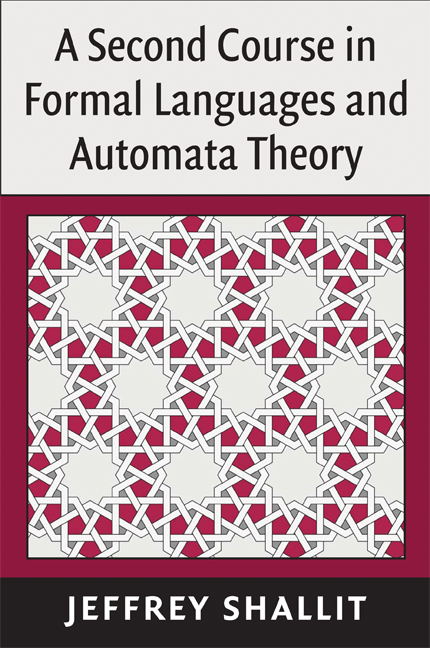
Jeffrey Shallit
A Second Course in Formal Languages and Automata Theory
Cambridge University
Press, September 30 2008.
|
|

Jeffrey Shallit |
